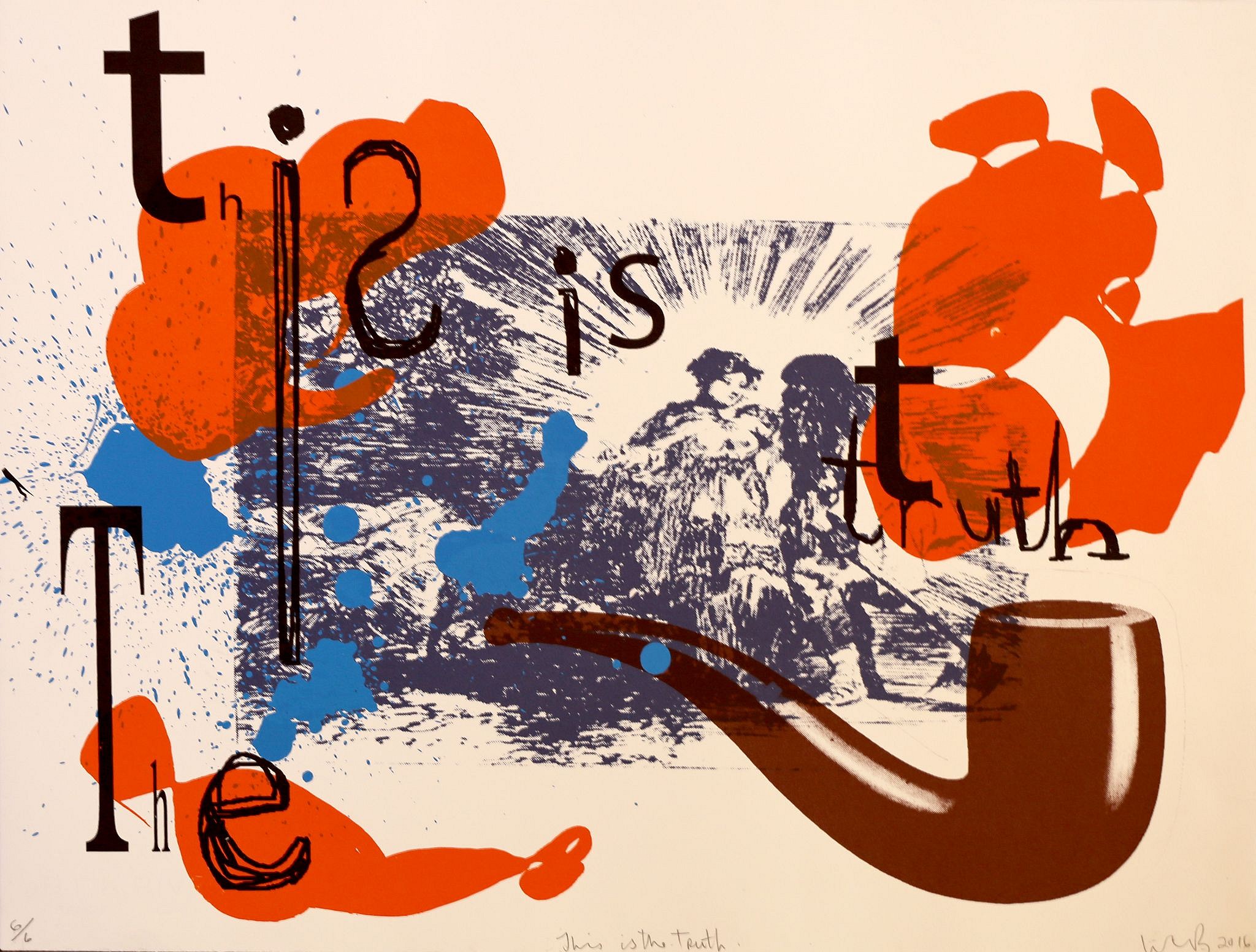PRESS RELEASE

The World that Changed the Image
Feb 3 – Mar 9, 2016
Everard Read Cape Town is delighted to present The World That Changed The Image, an exhibition of new bead and silkscreen work by Wayne Barker. The exhibition runs from the 3rd -29th February 2016
Divided into two distinct floors in the gallery. Upstairs, Barker continues his explorations into reinvigorating trite, popular imagery through his design interventions and their translation into sumptuous beadwork, that somehow puts the agony of craft and labour back into the popular, banal images from which they are designed - the sum unequivocally greater than the parts. Barker’s references extend across various centuries from Pop Art to Pierneef to illustrations from the Karma Sutra, as well as the recurring silhouettes of the Johannesburg sex workers he has become famous for.
Downstairs is occupied by silk-screens, a new medium for the artist. Here Barker has re–visited and re-interpreted images from a book entitled The Images that changed the World. Nicole Kritzinger investigates below the context of this new body of ideas and how intrinsically they flow from those that have permeated Barker’s art- making for the preceding decades.
“The world, with daily increase, produces images at a greater rate than ever before. We produce constantly with our camera phones. We reproduce images of daily life. We produce millions of images. Millions of selfies. Millions of landscapes. Millions of photos that might never get seen again, stored in the digital cloud that exists in the ether. We constantly create and reinterpret images integral to our historical frame of reference. We have changed the way we consume images. We have changed the way we make images. We are the world that changed the image.
Barker, throughout his career, has worked with appropriated and borrowed images as a critique of the world around him. The interaction between life and the image, human identity and the image are vital to his practice. In this exhibition he experiments for the first time with silkscreen, a medium that lends itself well to the reproduction of images. Within the medium lie implicit references to artists like Warhol, who utilized this system of image reproduction, and the critical consideration of the image that is foregrounded through this method of production.
Barker explores the power of the image, the way in which the world has produced images and how they are reproduced. He has consistently worked with images borrowed from other sources, exploring the power of the image. He works with the meaning an artist creates when appropriating well-known images, elucidating the layers of meaning, cultural depth and power. He subverts, questions and pulls at the edges of meaning, creating tension and challenging the viewer to reinterpret these canonical images in a contemporary framework.
Barker started working in silkscreen during a trip to New York City in 2015. Working with master printers he was inspired to continue work with the medium back in Joburg. He set up his own printing press in his studio near Ellis Park, learning how to print, how to experiment and how to manipulate the medium to produce his layered images. It has been a challenge to Barker, learning how to work with this new medium. This challenge and new obsession, has allowed Barker to expand his practice and his aesthetic.
Thematically Barker refers to Goya as a departure point, looking from Goya toward the contemporary, exploring images of what we consider to be historical moments of gravity. As Goya did, Barker explores the tensions and struggles of a world that continues to heave around us today. He also uses the grotesque, the elaborate, the exaggerated, the provocative, as Goya did. He balances this carefully in a constellation of images that refer to his cognizant struggle with the global increase of conservatism and religious extremism, of a world where many countries are constantly at war with one another and their own inhabitants. We live our own narratives, and the narratives of others through the images that we create and consume.
These images predict and follow one another equally, harbingers of what is to come; simultaneous reminders of what has happened. It is a mode of representation that asserts the way history repeats itself. This repetition is also inherent to the medium of print and reproduction, the way in which we reproduce images, thought, ourselves, our actions - the cyclical nature of life.
An image he has used prominently in this body of work is that of the first image of the earth from space broadcast on television, and that which he says is the “Image that changed the world, of the world that changed the image.” Television changed global access to images in a whole new way that film, or print, previously did not allow for. The method of silkscreen was a precursor to digital printing, another mode of reproduction that would completely change the way we consume and create the image. Barker relates medium to subject matter closely in this new body of work, and all its historical implications. He explores the World That Changed The Image.”



